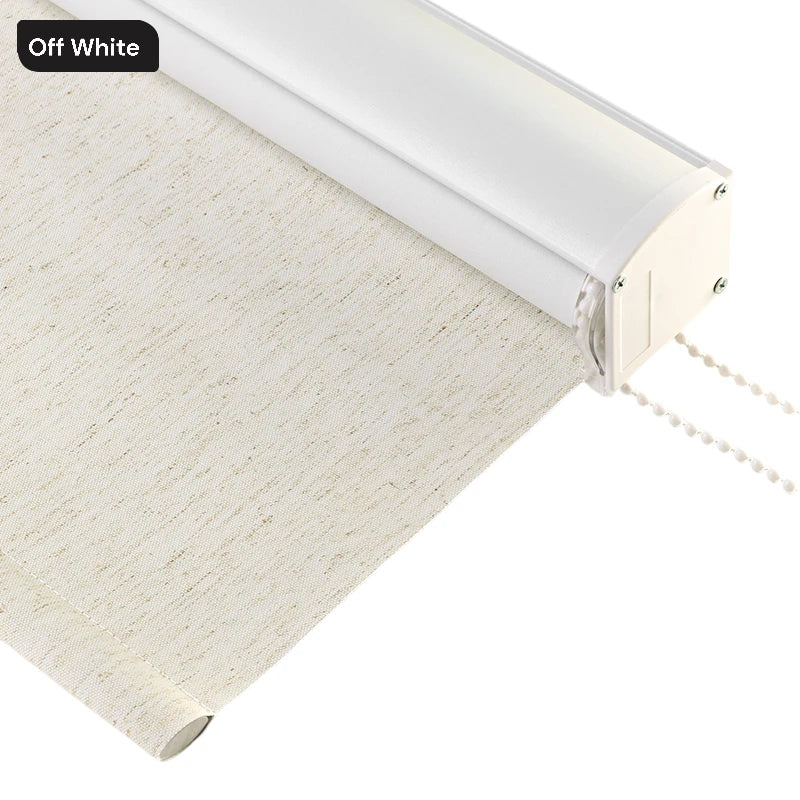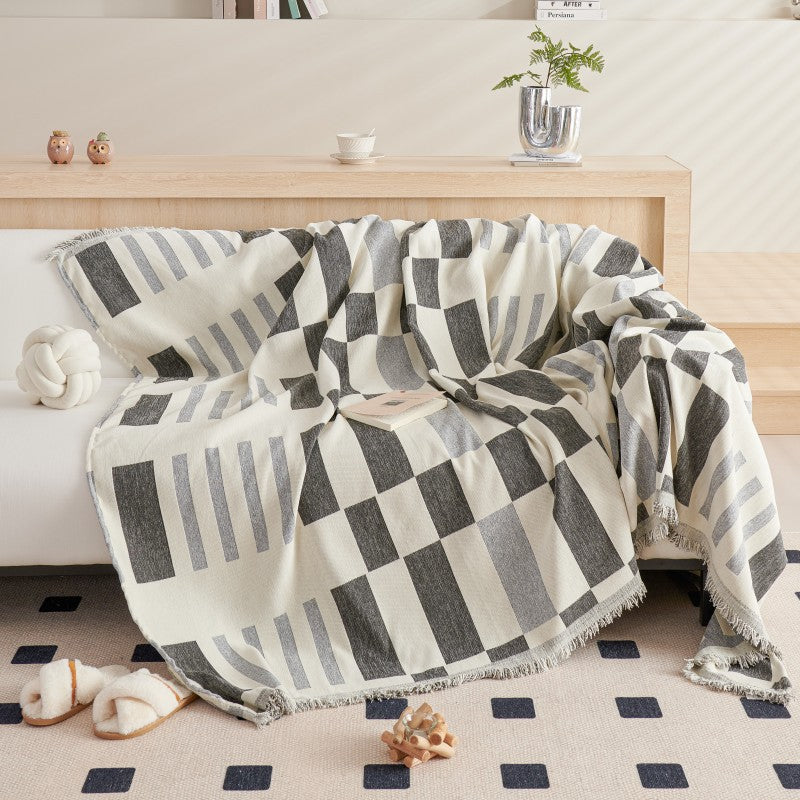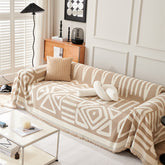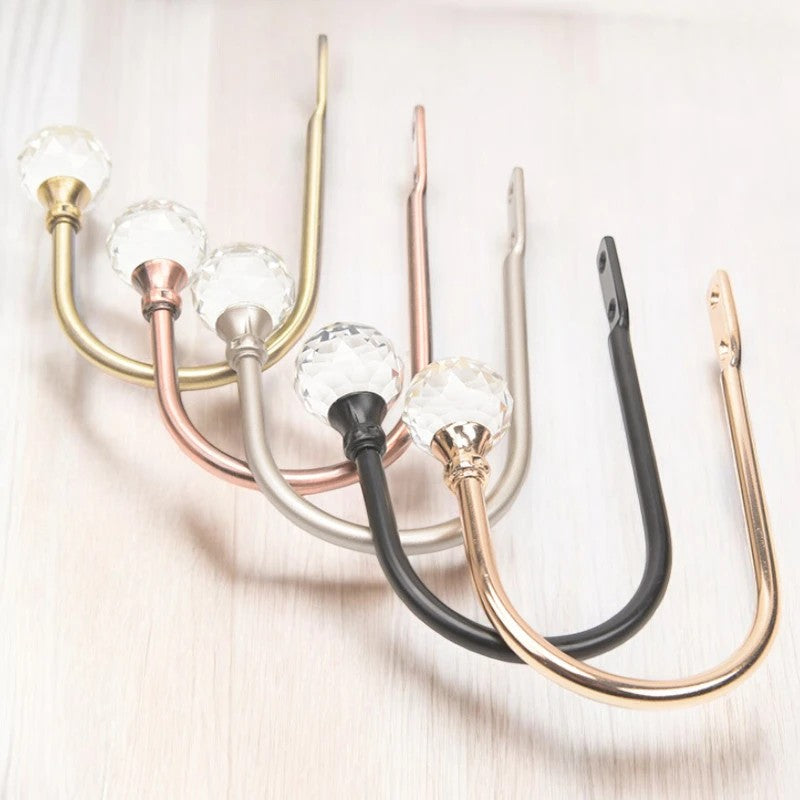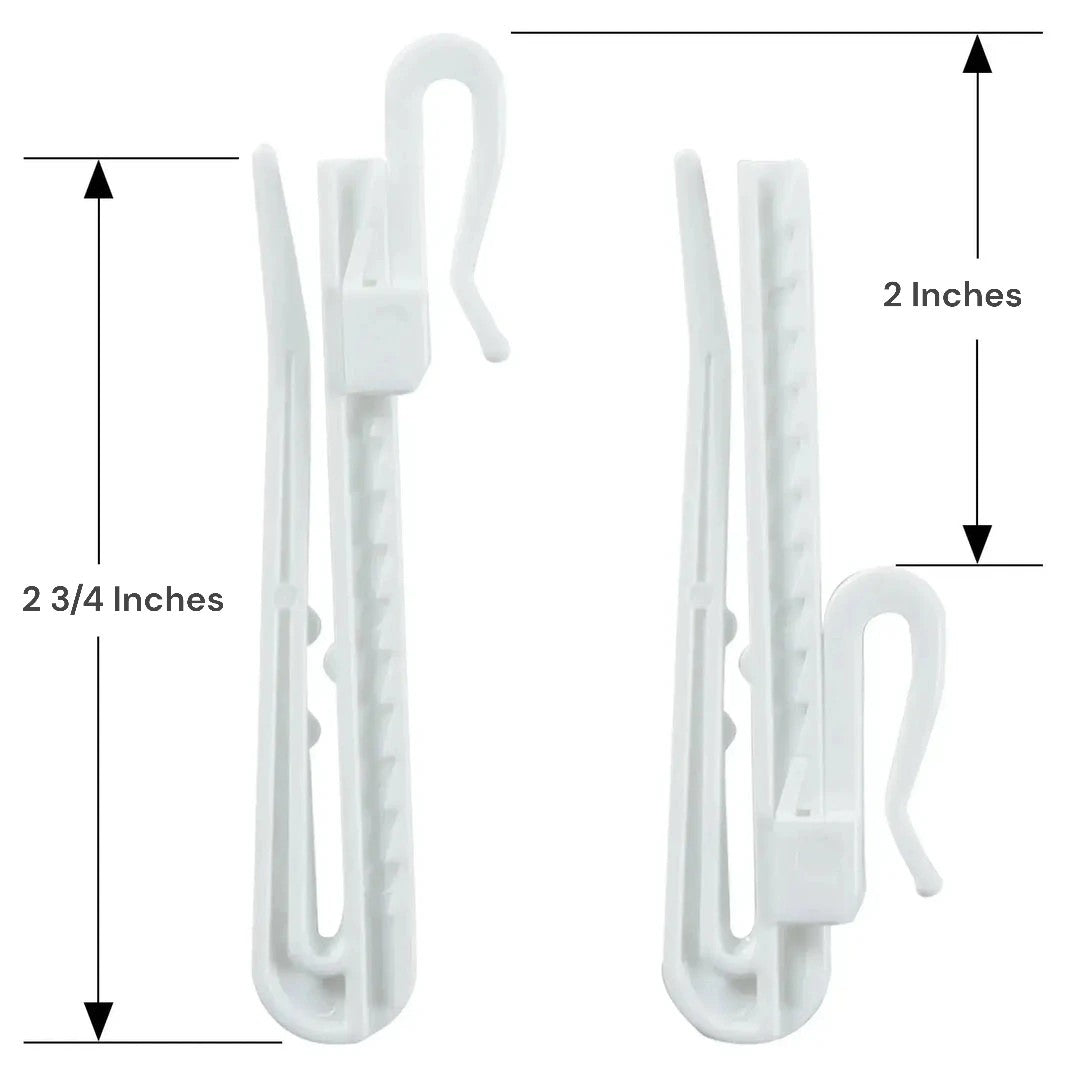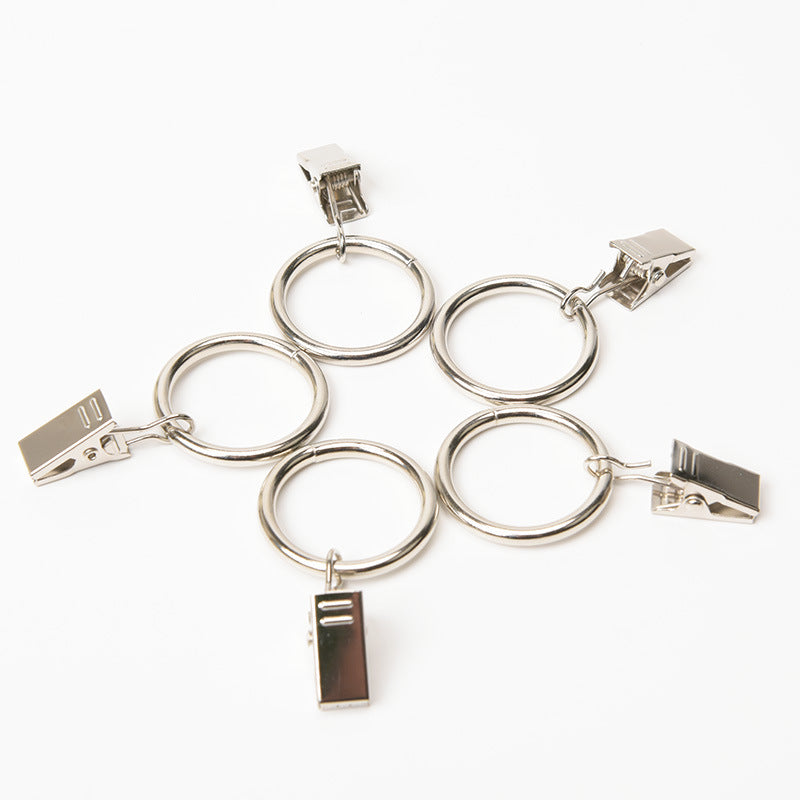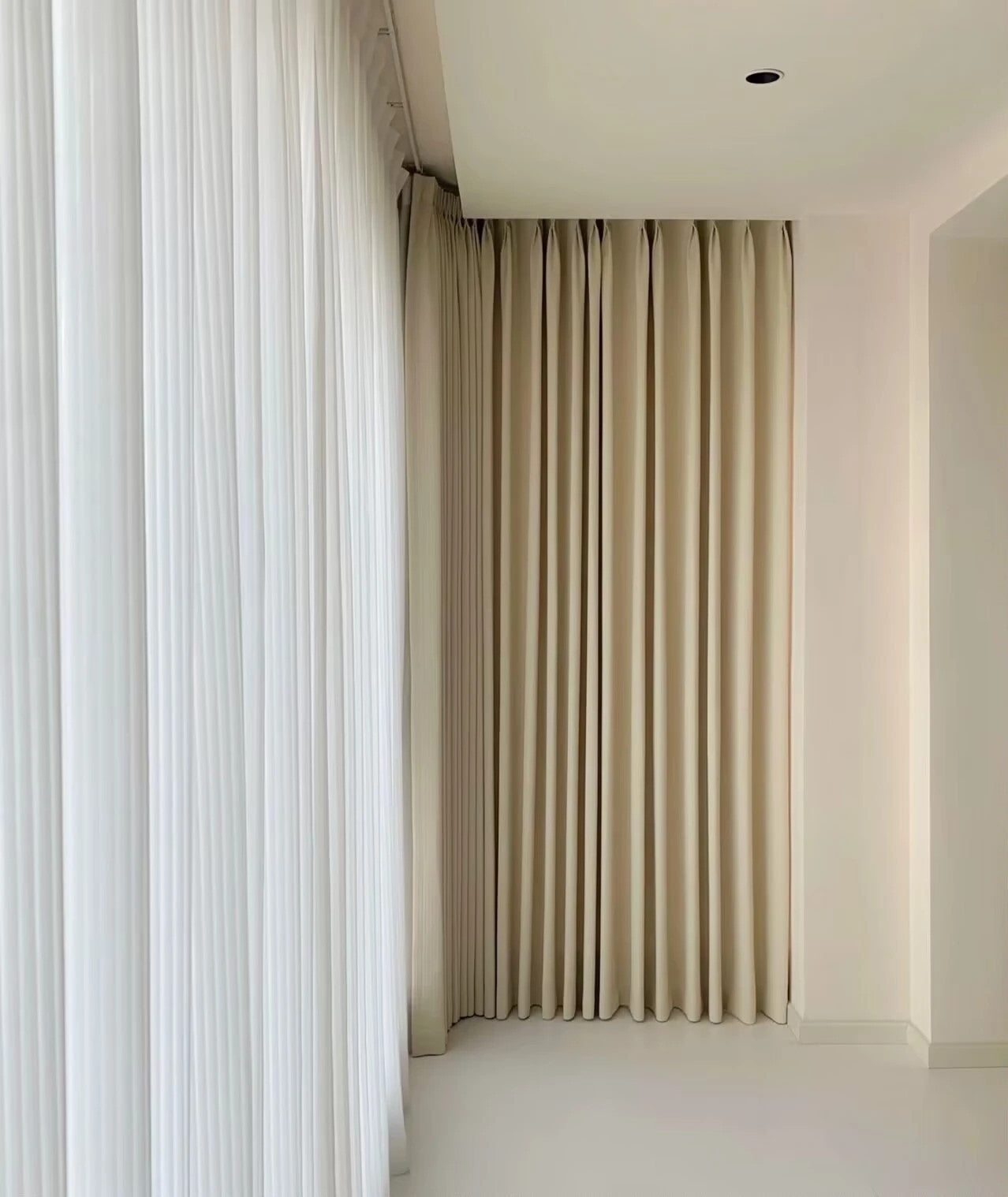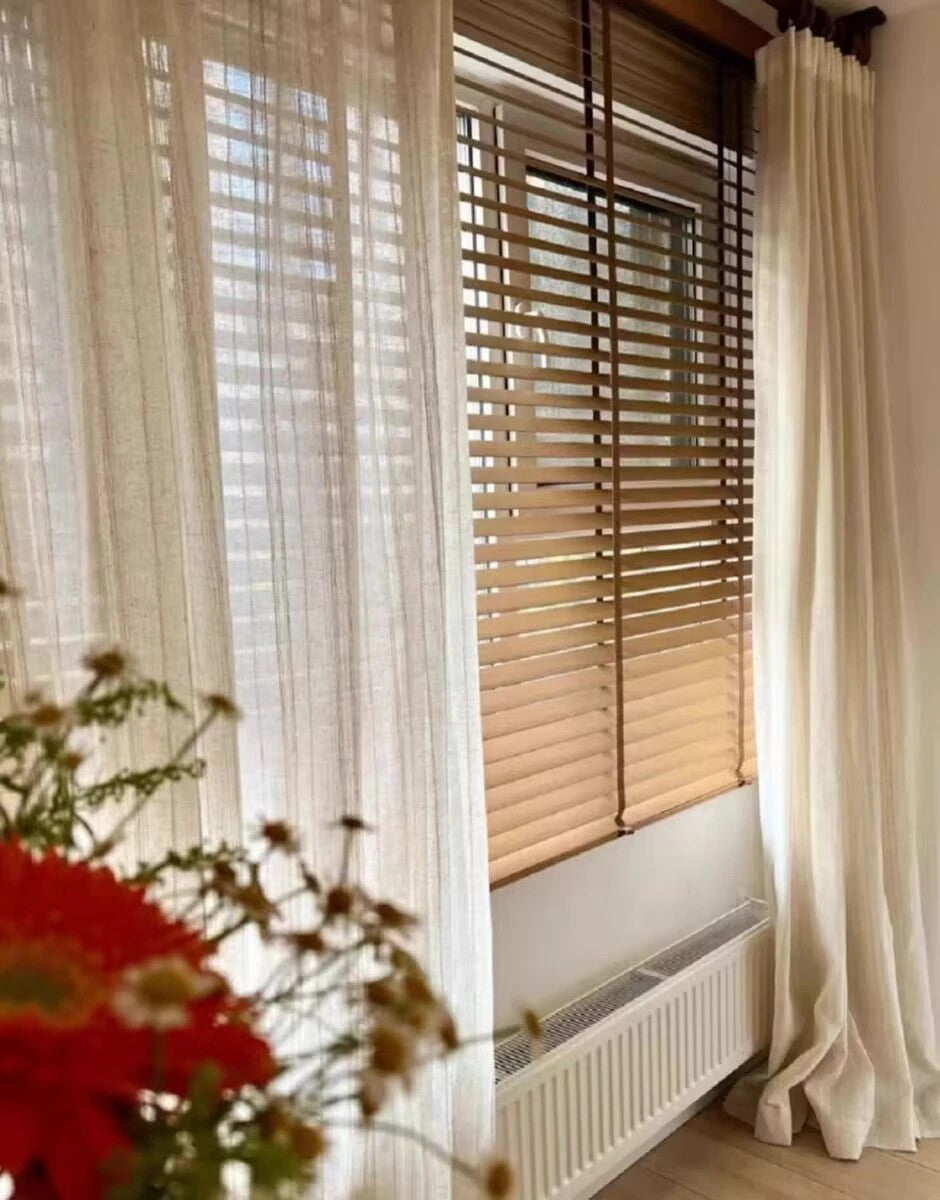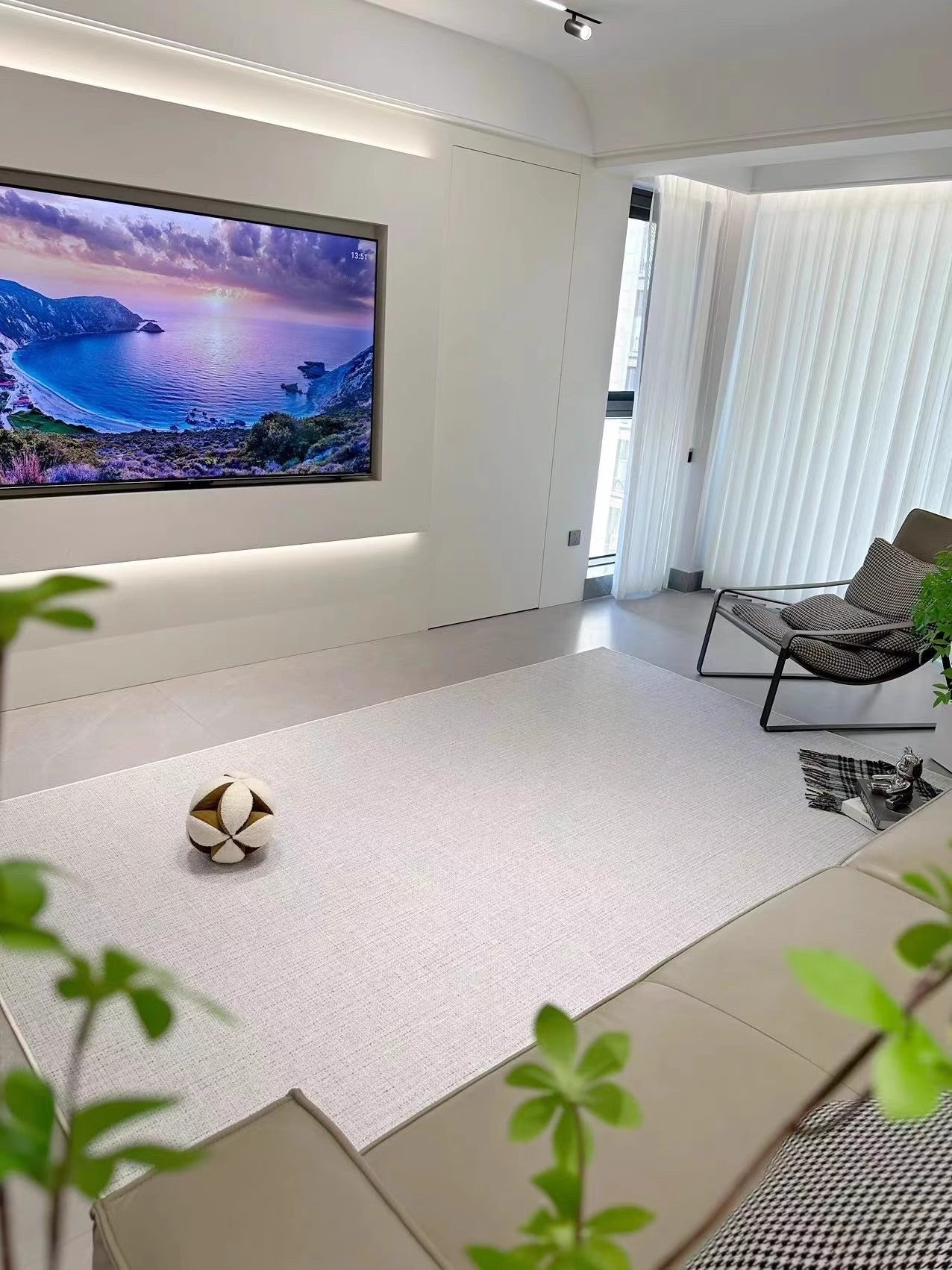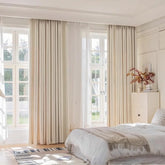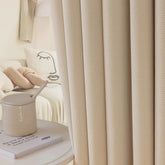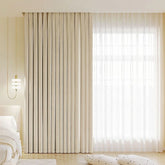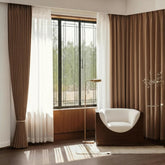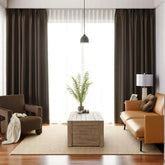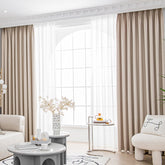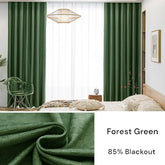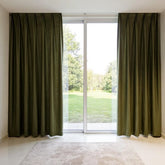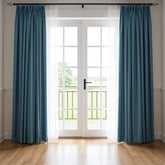Are Short or Long Curtains Better?
Deciding on the right curtain length can greatly impact the overall style and functionality of your windows. Whether you opt for short or long curtains, each choice has its own advantages and considerations. In this comprehensive guide, we will delve into the curtain length for windows and explore the pros and cons of short curtains versus long curtains, providing you with the ultimate resource for making the right decision.
Key Takeaways:
- Short curtains are a practical option for kids' rooms or when there are heat-producing radiators.
- Long curtains create a more dramatic look and can add a glamorous touch when puddled.
- According to professional designers, curtains should graze the floor and be 10 inches wider than the window on each side.
- Consider the specific needs and use of each room when deciding on curtain length.
- Custom curtains are preferred for achieving the perfect fit and style.
Now that we have covered the basics, let's explore the factors you should consider when choosing the curtain length in more detail.
Factors to Consider When Choosing Curtain Length
Choosing the right curtain length involves considering several factors to ensure it meets your specific needs and complements your room's style. Professional designers recommend that curtains should graze the floor and be 10 inches wider than the window on each side. If the width is limited, it can be cut in half. The curtain rod or hardware should be placed at the ceiling, just below crown molding, or 12 to 24 inches above the window trim.
Standard curtain lengths are 84 inches, 96 inches, and 108 inches, with the longer lengths being more versatile. It is recommended to err on the side of longer curtains rather than having them awkwardly short. Custom curtains are also preferred over standard lengths as they can be tailored to fit your specific window dimensions.
When measuring curtain length, it's important to measure multiple points due to uneven floors. The curtains should ideally skim the floor, but they can also float just above it for a tailored look. It's important to consider the specific needs and use of each room when deciding on curtain length. For example, short curtains are a practical option for kids' rooms or when there are heat-producing radiators. Café curtains, which cover only the lower part of the window, are a casual option. On the other hand, long curtains create a more dramatic look, while puddled curtains add a glamorous touch to your room's decor.
| Factors to Consider When Choosing Curtain Length |
|---|
| Curtains should graze the floor and be 10 inches wider than the window on each side |
| The curtain rod or hardware should be placed at the ceiling, just below crown molding, or 12 to 24 inches above the window trim |
| Standard curtain lengths are 84 inches, 96 inches, and 108 inches, with the longer lengths being more versatile |
| Custom curtains are preferred over standard lengths as they can be tailored to fit your specific window dimensions |
| Consider the specific needs and use of each room when deciding on curtain length |
Pros and Cons of Short Curtains
Short curtains offer unique advantages but also come with certain limitations that should be taken into account before making a decision. Let's explore the benefits and drawbacks of opting for shorter curtain lengths.
- Practicality: One of the key advantages of short curtains is their practicality, especially in certain rooms. For example, in kitchens or bathrooms where there may be water splashes or high humidity, shorter curtains can be more convenient as they are less likely to touch the floor and get wet. Additionally, in kids' rooms, shorter curtains can prevent children from pulling on them or tripping over long fabric.
- Casual and Modern Look: Short curtains can also offer a casual and modern look to your space. Café curtains, which cover only the lower part of the window, are a popular choice for kitchens and dining areas. They allow natural light to enter the room while still providing some privacy. This style can create a cozy and inviting atmosphere.
- Limitation of Light Control: However, it is important to consider the limitations of short curtains. Since they don't reach the floor, they may not provide the same level of light control and privacy as longer curtains. If you require more privacy or want to block out sunlight, longer curtains or additional window treatments may be necessary.
- Limited Decorative Impact: Short curtains may also have a limited decorative impact compared to longer curtains. If you are looking to create a more visually dramatic or elegant look in your space, longer curtains that pool or puddle on the floor can add a touch of glamour and sophistication.
When it comes to choosing curtain length, it's important to consider your specific needs and the purpose of each room. While short curtains offer practicality and a modern aesthetic, they may not provide the same level of light control or decorative impact as longer curtains. Take into account factors such as the room's function, the presence of radiators or water sources, and your desired style before making a decision.
| Advantages of Short Curtains | Disadvantages of Short Curtains |
|---|---|
| Practical, especially in certain rooms | May not provide adequate light control |
| Casual and modern look | Less decorative impact compared to longer curtains |
| May not suit all interior design styles |
Pros and Cons of Long Curtains
Long curtains bring a sense of elegance and drama to a space, but it's important to weigh their advantages against any potential disadvantages. Let's explore the pros and cons of choosing long curtains for your windows.
The Advantages of Long Curtains:
- Enhanced Visual Appeal: Long curtains create a sophisticated and luxurious look, making them ideal for formal living spaces or rooms where you want to make a statement.
- Height Illusion: By hanging curtains from ceiling to floor, you can create an illusion of higher ceilings, making the room feel more spacious and grand.
- Light Control: Longer curtains offer better light control, as they cover more of the window. This can be particularly beneficial in bedrooms or entertainment areas where you want to block out sunlight or create a cozy ambience.
- Privacy: With longer curtains, you can ensure greater privacy, as they cover a larger portion of the window.
The Disadvantages of Long Curtains:
- Space Requirements: Long curtains require more fabric, which means they may not be suitable for rooms with limited space or small windows.
- Cleaning and Maintenance: Longer curtains may be more difficult to clean, especially if they touch the floor. They can accumulate dust and dirt more easily, requiring more frequent cleaning or professional care.
- Cost: Typically, longer curtains require more fabric, which can result in higher costs compared to shorter curtains.
When considering long curtains, it's essential to think about the specific needs and use of each room. While they offer many advantages, it's important to consider the space, maintenance, and budgetary factors. With careful consideration, long curtains can transform your space into a stylish and captivating haven.
| Advantages | Disadvantages |
|---|---|
| Elegant and dramatic look | Require more space |
| Illusion of higher ceilings | Require more cleaning and maintenance |
| Better light control | Higher cost |
| Enhanced privacy |
As you decide on the curtain length for your windows, remember to consider your personal style, room dimensions, and functionality requirements. Long curtains can be a stylish and impactful choice, but it's important to assess the advantages and disadvantages before making your final decision.
Curtain Length for Different Rooms
Different rooms have different needs when it comes to curtain length, and understanding the right length for each space is essential for achieving the desired aesthetic and functionality. When measuring curtain length, it's important to consider factors such as the room's purpose, window size, and overall design scheme. Here are some guidelines to help you determine the optimal curtain length for different rooms:
Living Room
In the living room, curtains usually serve both practical and decorative purposes. To create an elegant and sophisticated look, floor-length curtains are often preferred. The curtains should graze the floor or be slightly puddled to add a touch of luxury. If the living room has tall windows, consider opting for longer curtain lengths to create a dramatic effect.
Bedroom
In the bedroom, privacy and light control are important considerations. Floor-length blackout curtains or those that just touch the floor are commonly used to create a cozy and serene ambiance. For bedrooms with tall windows, it's best to choose curtains that extend from ceiling to floor to maximize privacy and block out unwanted light. Remember to measure the curtain length from the highest point, especially if you have crown molding or an embellished ceiling.
Dining Room
In the dining room, curtains can enhance the overall dining experience and complement the decor. Ideally, the curtain length should be determined by the height of the dining table and chairs. For formal dining rooms, floor-length curtains that touch the floor or have a slight break are a popular choice. If you have a more casual dining space, cafe curtains that cover only the lower part of the window can create a relaxed atmosphere.
Remember, these are general guidelines, and personal preference should also be considered when choosing the curtain length for different rooms. Ultimately, the goal is to find a length that not only looks aesthetically pleasing but also fulfills the functional requirements of each space.
Custom curtains offer a range of benefits and options that can enhance the overall look and feel of your windows, so it's worth considering them when making your curtain length decision. Unlike standard lengths, custom curtains can be tailored to perfectly fit your windows, ensuring a precise fit and a polished appearance.
One of the main advantages of custom curtains is the ability to choose from a wide range of fabrics, colors, and patterns. This allows you to personalize your curtains and coordinate them with your existing decor, creating a cohesive and stylish look in your space. Whether you prefer a classic, elegant style or a bold, modern design, custom curtains can be customized to match your unique taste and aesthetic.
In addition to the aesthetic benefits, custom curtains also offer practical advantages. They can be made with specific features such as blackout lining, which blocks out light and provides privacy, or thermal lining, which helps insulate your windows and regulate the temperature in your room. These features can be particularly beneficial in bedrooms or living areas where light control and energy efficiency are important.
Overall, choosing custom curtains allows you to have more control over the final outcome and ensures that your curtains are tailored to meet your specific needs and preferences. While standard lengths may be more readily available and less expensive, custom curtains offer an opportunity to create a truly unique and customized window treatment that will enhance the beauty and functionality of your space.
| Custom Curtains | Standard Lengths |
|---|---|
| Perfect fit for your windows | Limited size options |
| Wide range of fabric choices | Limited color and pattern options |
| Ability to customize features (e.g., blackout or thermal lining) | Standard features |
| Enhances overall aesthetic and style | May not perfectly match existing decor |
| Starting at $26.99 at Dolcewe | Lower cost |
Conclusion
In conclusion, the choice between short and long curtains depends on personal preferences, room specifics, and desired aesthetics. Longer curtains add drama and can puddle for a glamorous touch. Custom curtains offer a personalized fit.
Short curtains are practical for kids' rooms and near radiators. Café curtains balance privacy and natural light. Measure carefully to ensure the right length.
Consider your style, functionality, and room needs when choosing curtain length.
At Dolcewe, we offer custom sizes for all curtains, whether short or long, starting at $26.99. Shop our custom curtain collection and upgrade your space today!
FAQ
Q: Are short or long curtains better?
A: The choice between short and long curtains depends on your personal style and the specific needs of the room. Short curtains are practical for certain spaces, such as kids' rooms or rooms with heat-producing radiators. Long curtains, on the other hand, can create a more dramatic and elegant look. Consider the function and desired aesthetic when deciding on the curtain length.
Q: What is the ideal curtain length for windows?
A: According to professional designers, curtains should graze the floor and be 10 inches wider than the window on each side. If the width is limited, it can be cut in half. The curtain rod or hardware should be placed at the ceiling, just below crown molding, or 12 to 24 inches above the window trim. It is recommended to err on the side of longer curtains rather than having them awkwardly short. Custom curtains are also preferred over standard lengths.
Q: What are the pros and cons of short curtains?
A: Short curtains have their advantages and drawbacks. The benefits of short curtains include their practicality in certain rooms and their suitability for spaces with heat-producing radiators. However, short curtains may not create a dramatic look and can sometimes appear choppy or unfinished. Consider the style and function of the room before choosing short curtains.
Q: What are the pros and cons of long curtains?
A: Long curtains offer their own set of advantages and disadvantages. The advantages include the ability to create a more dramatic and elegant look, as well as the versatility of longer lengths. On the downside, long curtains may require more maintenance and can be challenging to keep clean. Consider the desired aesthetic and maintenance requirements when deciding on long curtains.
Q: How do I determine the curtain length for different rooms?
A: The ideal curtain length can vary depending on the room and its specific requirements. Professional designers recommend curtains that graze the floor and are 10 inches wider than the window on each side. Consider the function of the room, the desired aesthetic, and the size and shape of the windows when determining the curtain length.
Q: Should I choose custom curtains or standard lengths?
A: Custom curtains offer several advantages over standard lengths. They can be tailored to fit your specific windows, ensuring a perfect fit and an elevated look. Custom curtains also give you more control over fabric choice, design, and detailing. While standard lengths may be more readily available, custom curtains provide a unique and customized look for your space.



